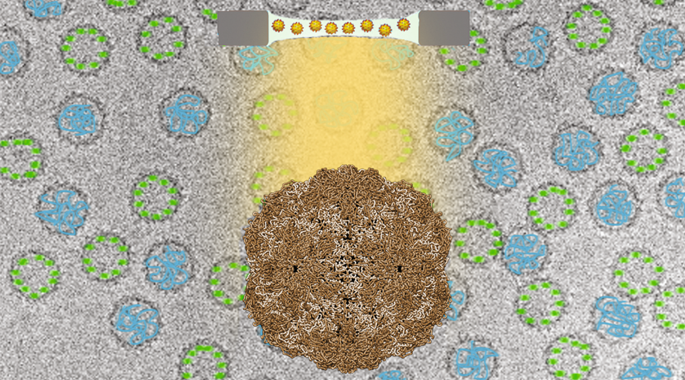当前位置:
X-MOL 学术
›
Nat. Chem. Biol.
›
论文详情
Our official English website, www.x-mol.net, welcomes your feedback! (Note: you will need to create a separate account there.)
Cryo-electron microscopy for the study of virus assembly.
Nature Chemical Biology ( IF 14.8 ) Pub Date : 2020-02-20 , DOI: 10.1038/s41589-020-0477-1 Daniel Luque 1 , José R Castón 2
Nature Chemical Biology ( IF 14.8 ) Pub Date : 2020-02-20 , DOI: 10.1038/s41589-020-0477-1 Daniel Luque 1 , José R Castón 2
Affiliation

|
Although viruses are extremely diverse in shape and size, evolution has led to a limited number of viral classes or lineages, which is probably linked to the assembly constraints of a viable capsid. Viral assembly mechanisms are restricted to two general pathways, (i) co-assembly of capsid proteins and single-stranded nucleic acids and (ii) a sequential mechanism in which scaffolding-mediated capsid precursor assembly is followed by genome packaging. Cryo-electron microscopy (cryo-EM) and cryo-electron tomography (cryo-ET), which are revolutionizing structural biology, are central to determining the high-resolution structures of many viral assemblies as well as those of assembly intermediates. This wealth of cryo-EM data has also led to the development and redesign of virus-based platforms for biomedical and biotechnological applications. In this Review, we will discuss recent viral assembly analyses by cryo-EM and cryo-ET showing how natural assembly mechanisms are used to encapsulate heterologous cargos including chemicals, enzymes, and/or nucleic acids for a variety of nanotechnological applications.
中文翻译:

冷冻电子显微镜用于病毒装配的研究。
尽管病毒的形状和大小极为不同,但进化导致有限的病毒类别或谱系,这可能与可行衣壳的装配限制有关。病毒装配机制限于两个一般途径,(i)衣壳蛋白和单链核酸的共装配,和(ii)脚手架介导的衣壳前体装配后进行基因组包装的顺序机理。革命性的结构生物学的低温电子显微镜(cryo-EM)和低温电子断层扫描(cryo-ET),对于确定许多病毒装配体和装配中间体的高分辨率结构至关重要。大量的冷冻EM数据还导致针对生物医学和生物技术应用的基于病毒的平台的开发和重新设计。
更新日期:2020-02-20
中文翻译:

冷冻电子显微镜用于病毒装配的研究。
尽管病毒的形状和大小极为不同,但进化导致有限的病毒类别或谱系,这可能与可行衣壳的装配限制有关。病毒装配机制限于两个一般途径,(i)衣壳蛋白和单链核酸的共装配,和(ii)脚手架介导的衣壳前体装配后进行基因组包装的顺序机理。革命性的结构生物学的低温电子显微镜(cryo-EM)和低温电子断层扫描(cryo-ET),对于确定许多病毒装配体和装配中间体的高分辨率结构至关重要。大量的冷冻EM数据还导致针对生物医学和生物技术应用的基于病毒的平台的开发和重新设计。



























 京公网安备 11010802027423号
京公网安备 11010802027423号